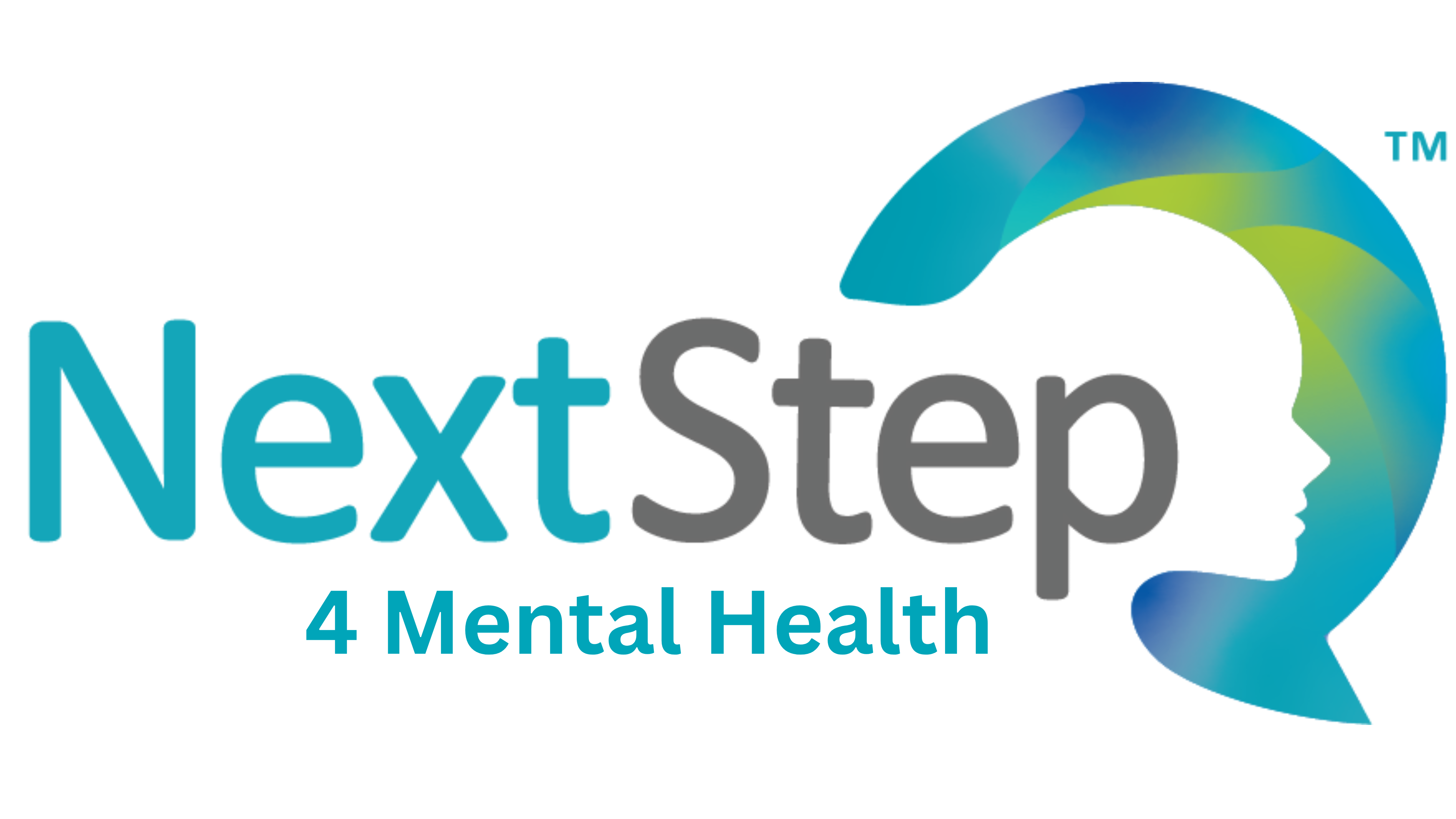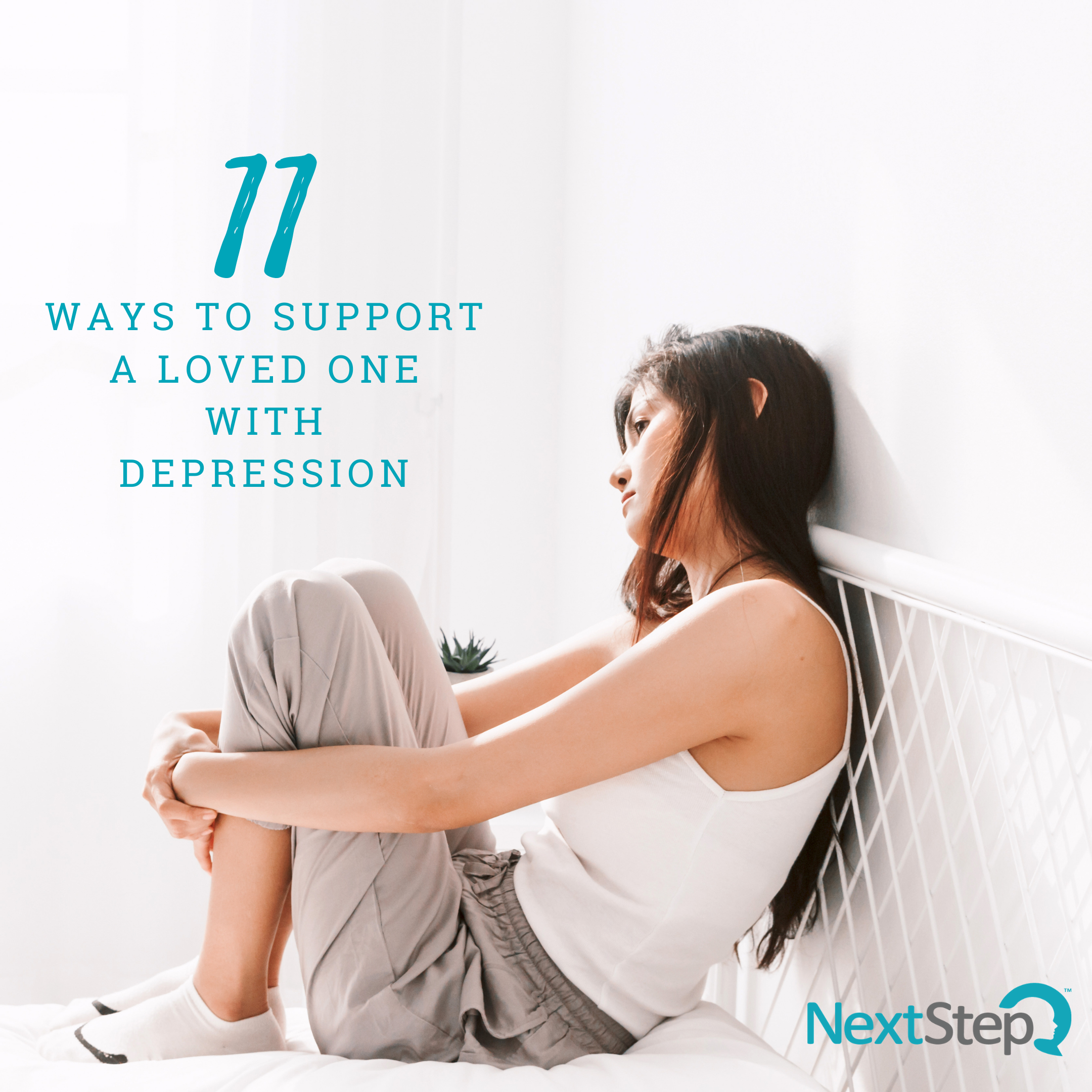
11 Ways to Help Someone with Depression
If a family member or loved one has depression, you might wonder what you can do to help them feel better. You might even feel confused or worried for your loved one.
At Next Step 2 Mental Health, our team of caring providers wants you to know that depression is treatable. In this article, we’ll explore 11 ways you can help someone in your family with depression.
11 Ideas to Help a Loved One with Depression
It can be overwhelming to see a loved one struggle with the symptoms of depression, but here are 11 ways you can help.
1. Practice Self-Care … and Take Care of YOU

You’ve probably heard the phrase: “You can’t pour from an empty cup.” Before you can help your loved one, you have to take care of yourself too. That means your physical and mental health. If you’re burnt out, it can be hard to care for another person. Taking a step back to recharge yourself can give you the energy you need to care for a loved one.
Self-care ideas include:
- Eating nourishing meals
- Exercising regularly (read this article to find out how nature improves your mental health)
- Getting quality sleep (aim for at least 7-9 hours of sleep each night)
- Allotting time for your own favorite hobbies
- Reading a relaxing book
You can also encourage self-care habits for your entire family.
2. Acknowledge Your Own Feelings
Depression doesn’t just impact your loved one. It can affect your entire family. Caring for a spouse or teen with depression can be overwhelming. Don’t ignore your feelings. They are normal and valid. You can’t control what you feel, but do know that your feelings are a natural response to what can be a potentially overwhelming or difficult situation.
You may find it valuable to join a caretaker/family support group, talk with with your spouse (which is especially important if you are both caring for a child or teen with depression), or even see a therapist yourself. The important thing is to be open about your frustrations rather than keep them pent up inside.
3. Learn as Much as You Can About Depression
Depression is well-known for causing intense sadness, but that’s not the only symptom. Depression can affect people differently. Take the time to read about seasonal affective disorder, how depression physically affects the human body, and explore the lesser-known symptoms of depression.
You might notice any of the following in your loved one:
- Weight changes (either losing or gaining weight)
- Loss of interest in favorite hobbies
- Changes in eating habits (including eating more and eating less)
- Sleep disturbances and insomnia
- Sleeping too much or not enough
- Feeling guilty
- Feeling worthless
It’s also important to note that depression causes physical symptoms too. Your partner or teen might complain of headaches, muscle tension, and stomach pain.
Monica Clark, LPA elaborates: “Depression is not just in your head.” She continues to share that depression can cause real, tangible pain. Depression can alter the way your loved one experiences pain. It can decrease his/her pain tolerance.
4. Research Disability Laws and Rights
If your loved one can’t work due to depression, you might want to learn more about any pertinent disability laws. The American Disability Act (ADA) defines a disability as a physical or mental impairment that substantially limits a major life activity. Under this law, individuals have the right to privacy as well as the right to ask for reasonable accommodations.
5. Be Supportive

One of the most helpful things you can do is to let your loved one that you are there for them. Support – in the form of a listening ear or a shoulder to cry on – can be comforting
Be patient, but let your loved one know you are there for them in whatever way they need.
Depression is not their fault and it doesn’t make someone lazy, worthless, or weak. Don’t be afraid to ask how you can best help out. You’ll never know what a simple offer to help can do until you try.
6. Don’t Take Withdrawal Personally
People with depression may withdrawal or avoid social outings or events. Try not to take withdrawal personally. Withdrawal can be hurtful, especially if it’s your spouse that pulls away. Recall from your research on depression that loss of libido can be a sign of depression – and not a sign that something is wrong with you.
Withdrawal (or even an angry outburst) may have nothing to do with you.
7. Resist Nagging
Depression can cause fatigue and loss of interest in normal everyday routines. On the outside, it might look as if your loved one is lazy – especially if they stop helping out around the house. However, a person with depression isn’t lazy. They are struggling with a mental illness.
Try to remember that everyday activities – such as paying a bill or even feeding a beloved pet – can be very overwhelming for someone with depression.
Try not to blame your loved one – or yourself. There’s no shame in asking for help.
8. Learn about Depression Treatments
Although depression can be incapacitating, it can be treated with therapy, lifestyle changes, and medication. One easy way to help your loved one is learn about potential treatment options, including how depression medication works.
You might want to learn:
- How depression medication works
- What are the potential side effects
- How to tell if a treatment is no longer working
- How to tell if your teen has stopped taking medication (withdrawal symptoms)
If you’re helping your teenager manage his or her depression, you might set up online therapy appointments, encourage healthy lifestyle changes, and make sure they take their medication as described – and reassure them that medication isn’t a sign of weakness.
9. Offer Hope to Your Loved One

“Once you choose hope, anything is possible.” Christopher Reeve
Offering hope to a loved one can give them the courage to get dressed each morning. Hope comes in many forms. It might faith in God, the thought of their children, or even a pet – or anything that gets your spouse or teen out of bed each morning.
Tip: Know what matters to your spouse or teen (like children or a pet) and find ways to remind him or her of these sources of hope when they are struggling on a bad day.
10. Know When You Need Immediate Help
If your family member is showing signs of suicidal thoughts or is self-harming, he or she needs immediate help.
Out of an abundance of caution and for the sake of safety, familiar yourself with these red flags:
- Preoccupation with death
- Signs of self-harm
- Creating a will and/or giving away possessions
- Talking openly about suicide
- Saying goodbye as though it’s the last time
- Statements like, “You’d be better off without me” or “Maybe I should just go away”
- Suddenly switching from being very depressed to being very happy without reason
If you are feeling suicidal, thinking about hurting yourself, or are concerned that someone you know may be in danger of hurting himself or herself, call the National Suicide Prevention Lifeline at 1-800-273-TALK (1-800-273-8255). It is available 24 hours a day, 7 days a week and is staffed by certified crisis response professionals.
11. Love Them Unconditionally
Feelings of guilt or worthlessness often accompany depression. These feelings may cause a person with depression to feel like a burden. To mitigate these feelings, let your loved one know that your love is unconditional.
Explore Your Next Steps
Regardless of what type of mental health concerns you have, our team of skilled and compassionate providers can help you and your family regain control of your life. At Next Step 2 Mental Health, it’s our mission to help you live a happier life, a better life.
Give us a call at our Louisville, Kentucky office at 502-339-2442, or send us a message to request more information.
You can also request an appointment with our convenient scheduling tool here.
Learn More
Do You Have Depression or Seasonal Affective Disorder?
Winter blues. Winter funk. The Blues. Whichever name you use, the reality is that seasonal affective disorder (SAD) is common during the darker winter months, and it can be debilitating.
If you’re experiencing any symptoms of depression or SAD, we encourage you to give us a call. Whether you’re struggling with major depressive disorder or seasonal affective disorder, we can help you feel better.
In the meantime, continue reading this article to explore what SAD is and how it’s different from major depressive disorder.
What Is Seasonal Affective Disorder?
According to the Diagnostic and Statistical Manual of Mental Disorders (DSM-IV), seasonal affective disorder is described as a “specifier,” referring to the seasonal pattern of major depressive episodes. Depressive episodes can occur within major depressive disorder as well as bipolar disorders.
According to the American Family Physician, SAD is a pattern of major depressive episodes that come and go with changes to the seasons. The most common form of SAD is known as the winter blues or winter depression, with symptoms starting in the fall and continuing until spring.
Symptoms of a major depressive episode (whether you have SAD, major depressive disorder, or bipolar disorder) include:
- Increased feelings of sadness
- Feeling depressed almost every day
- Loss of passion for your favorite activities
- Fatigue and low energy levels
- Difficulty sleeping
- Changes to your appetite
- Feeling agitated
- Trouble concentrating
- Experiencing feelings of hopelessness or guilt
- Having frequent thoughts of death or suicide
If you are feeling suicidal, thinking about hurting yourself, or are concerned that someone you know may be in danger of hurting himself or herself, call the National Suicide Prevention Lifeline at 1-800-273-TALK (1-800-273-8255). It is available 24 hours a day, 7 days a week and is staffed by certified crisis response professionals.
SAD or Depression?

How can you tell if your feelings of depression are related to SAD or major depressive disorder? The biggest indication is the connection to seasonal changes. According to the DSM, the following characteristic help to identify the seasonality of your depression:
- There is a recurrent link between the onset of the major depressive episodes and a certain time of year
- There is a full remission (or at least a shift from major depression to hypomania) that occurs at a certain time of year
- Two episodes have occurred in the last two years
- Major depressive episodes linked to seasonal change outnumber the episodes of non-seasonal episodes
Tips for Decreasing the Impact of SAD
Now that we’ve covered what SAD is, how to spot the signs of SAD, and how light affects your mood, what can you do about it?
Here are four strategies you can implement.
1. Schedule Regular Exercise

Staying active is good for your body and your mind. Exercise can boost your mood — thanks to those feel-good endorphins. Endorphins help reduce stress, decrease feelings of depression or anxiety, and even help you sleep better at night.
Even as the seasons change, try to find ways to fit 30 minutes of daily exercise into your routine. As the Norwegian say, “There’s no such thing as bad weather, only bad clothes.” Bundle up and experience cold-weather activities like cross-country skiing, hiking, or snowshoeing. Even an extra walk around the block in the fresh air is good for you.
You don’t have to exercise outside to reap these benefits. There are plenty of indoor options: running on a treadmill, cycling on a stationary bike, yoga or Pilates, lifting weights, or following along with a YouTube at-home workout.
2. Soak Up Some Sunshine
Even if the sun is setting early and early, try to spend time outside each day. Experts suggest spending 30 minutes of your time in the morning sun — to start the day off right. If you walk your dog or go for a quick jog in the early morning sun, then you’ve crossed two items off your list in one swoop: regular exercise and soaking up some sunshine.
3. Practice Good Sleep Hygiene
Sleep disturbances are a common symptom of depressive episodes. You can help to reduce the intensity of sleep disturbances by following good sleep hygiene.
This includes:
- Going to bed at the same time every night
- Avoiding blue lights before bed
- Sleeping in a cool, dark room (just a few degrees cooler than room temperature)
- Using a white noise machine
- Engaging in a relaxing activity before bed (like reading or listening to calming music)
- Exercising during the day (but not within the hours right before bed)
Want more sleep tips? You can learn more about sleep hygiene here: What Is Sleep Hygiene?
4. Seek Treatment
Whether you’re dealing with SAD or major depressive disorder or bipolar disorder, depression can be debilitating — even if it doesn’t last year-round. Our compassionate and non-judgmental team of experts is here to help you get the relief you need.
Call our Louisville, Kentucky office at 502-339-2442. You can also request an appointment online.
Learn More
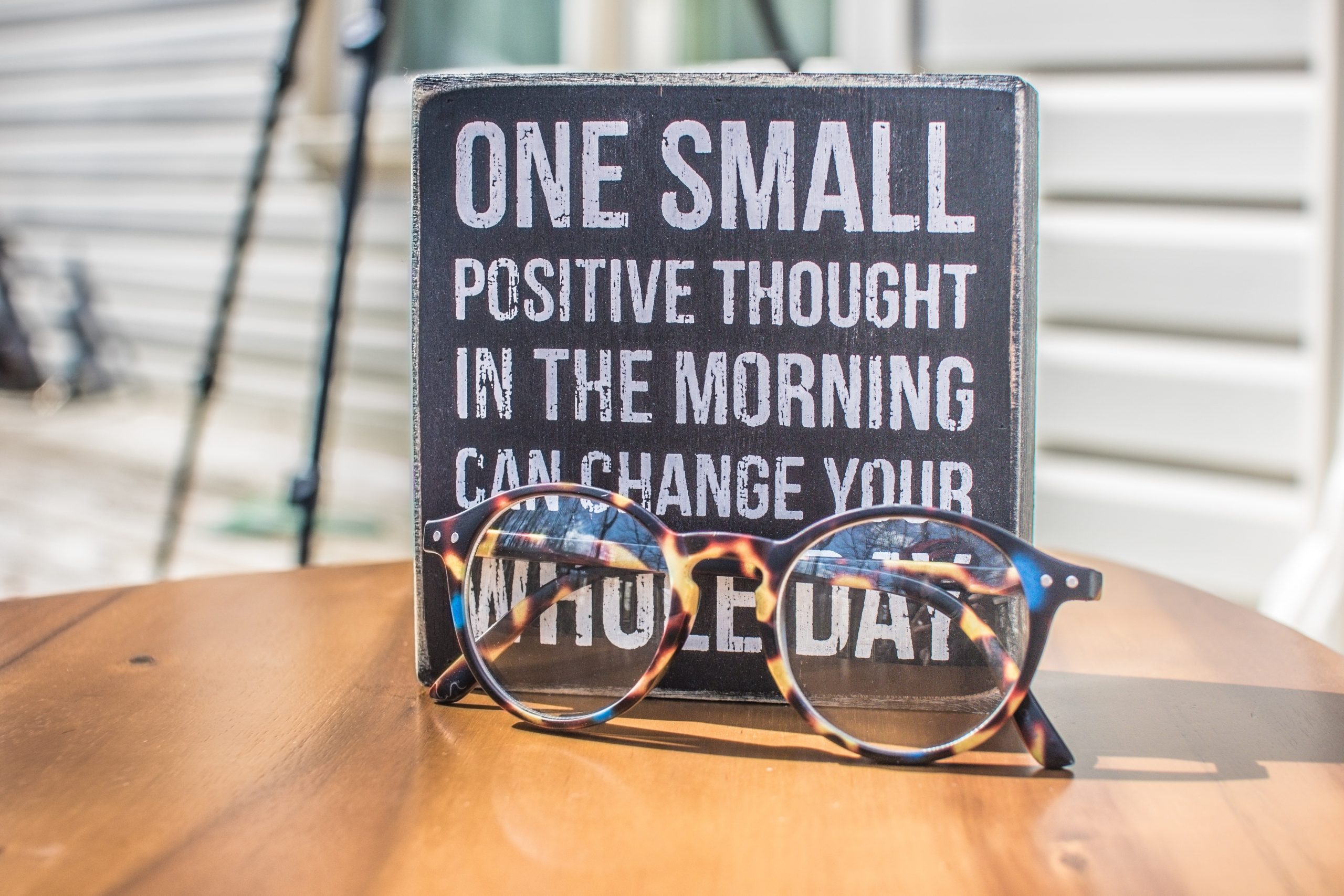
Overcoming the Negative Self-Talk Cycles of Depression
How you talk to others is important and can play a big role in the quality of your relationships. However, how you talk to yourself is equally important. Your state-of-mind and your internal monologue (self-talk) impacts your mental health. The American Psychological Association can assess the quality of self-talk to predict anxiety in kids. Self-talk doesn’t just impact anxiety; it can exacerbate depression too. According to a study published in the Annual Review of Clinical Psychology, people who engage in negative self-talk experience more intense feelings of depression.
Here at Next Step 2 Mental Health, we want to help you overcome both the physical and mental challenges of living with depression. Our multidisciplinary team is experienced when it comes to diagnosing and treating depression — and that includes helping you overcome negative self-talk.
In the meantime, read through this article to learn how to identify common negative self-beliefs and how you can reframe your mindset.
Depression and Negative Self-Talk: What’s the Link?
Sadness is one of the most well-known symptoms of depression. While intense sadness can be debilitating, it’s not the only symptom of depression. Other symptoms of depression include changes to your eating habits (eating more or less), changes to your sleeping routines (sleeping more or less), irritability, fatigue, and physical aches.
Teens and adults with depression might also cling to negative self-beliefs. Self-beliefs are thoughts and perceptions about yourself, and they can be positive or negative.
Negative self-beliefs are faulty, self-defeating thoughts that you hold about yourself and/or the world around you.”
Negative self-beliefs cause low self-esteem. Holding so many negative views about yourself and your abilities can impact your life in many ways.
Negative self-talk might:
- Make it hard for you to think you’ll reach your goals
- Lead you into the faulty thinking patterns that if you can’t be perfect, then it’s just not worth it to try
- Impact your relationships with friends, co-workers, and family members
So what can you do about negative self-talk? The first step in overcoming negative core beliefs is to learn to identify the negative self-talk and then work towards minimizing those thought patterns.
Identifying Negative Self-Talk and Negative Core Beliefs
Negative core beliefs are the faulty things you believe about yourself, and negative self-talk is the way you talk to yourself — that inner dialogue with yourself.
Negative self-talk can sound different to each person, but here are 10 examples.
- “I’m unlovable.”
- “I can’t do anything right.”
- “I’ll never be good enough at A or B.”
- “I’m not enough.”
- “I’ll never be a good enough spouse.”
- “I’m a failure.”
- “I’m not a good enough parent/brother/sister/friend.”
- “I’m too weak.”
- “I’m too lazy.”
- “I’ll never succeed at work.”
Once you can pinpoint a thought as limiting or negative, you can start to replace negative thoughts with neutral thoughts.
Replacing Negative Thoughts
First, remember that your thoughts don’t necessarily reflect the truth. For instance, just because you think you’ll never be a good enough runner doesn’t mean that you have to stop going for a daily jog.
Negative self-talk wants you to think “I’m too weak, and I’ll never be able to run a 5K.” However, if you focus on neutral thoughts — rather than the negative — you might see a clear path forward.
What does a neutral thought sound like?
Consider this phrase: “Preparing for this race is challenging. I understand now how more cross-training sessions can help me become a better runner.”
Here’s the difference: Negative self-talk limits your ability to believe in yourself to reach your goals. Neutral self-talk can help you see your potential without limiting you. Positive self-talk can take it one step further.
Consider this phrase: “My body is strong. With every training day, my muscles become stronger and stronger. I can follow the training program, and I can complete my race.”
Positive Self-Talk

Multiple studies have shown that positive thinking and positive self-talk can have a real impact on your mental and physical health. For instance, athletes often use positive self-talk to boost performance or even push through more challenging workouts.
Examples of positive self-talk include:
- “I can do this.”
- “I am good enough.”
- “My body knows what to do.”
- “If I try hard, I can get there.”
More Options to Stop Negative Self-Talk
In addition to focusing on neutral and positive self-talk, keep these tips in mind:
- Say your self-beliefs out loud. It might feel silly at first, but it’s actually a lot easier to spot the negative self-talk by saying your thoughts out loud.
- Ask yourself what a friend would say to you. Try to think like your friend. Or, alternatively, what would you say to a friend in your position?
- Insert as much positive self-talk into your day as possible. You can even stick sticky notes on your mirror to start your day on a more positive note.
Remember: Share a little TLC with yourself. Loving yourself starts with how you think about yourself.
Depression Treatment When You Need It Most
At Next Step, we know how profoundly depression can impact all aspects of your life. We also know that it can be hard to free yourself from a cycle of negative self-talk. The good news is you don’t have to go on this journey alone. Our compassionate, non-judgmental team offers a variety of depression treatments, including medication and therapy.
If depression is keeping you from your potential, we can help. Call our Louisville, Kentucky office at 502-339-2442. You can also request an appointment online.
Learn More
Bipolar Disorder and Depression: What You Need to Know
Nearly 6 million Americans are impacted by bipolar disorder every year. In terms of percentages, that’s about 2.6% of the adult population — 2.6% of all adults who struggle with the lows of bipolar depression and the highs of a manic episode.
At the Next Step 2 Mental Health, our team is experienced in diagnosing depression. This is important because there are many types of depression, including seasonal affective disorder, major depressive disorder, postpartum depression, and bipolar depression. Your treatment varies depending on what type of depression you have.
Below, we cover what manic depression is — and how it differs from other types of depression.
What Is Bipolar Depression?
Before we look at what bipolar depression is, let’s look at the many types of bipolar disorder. The following are different types of bipolar disorder:
- Bipolar disorder I
- Bipolar disorder II
- Cyclothymia
Regardless of which type of bipolar disorder you have, the disorder is characterized by shifts in your mood that cycle between manic (or even hypomanic) episodes and depressive episodes. Manic episodes refer to cycles in mood characterized by high energy and inappropriate levels of euphoria. It’s also possible to experience illusions of grandeur, decreased need for sleep, and irritability. Bipolar depression refers to the other shift in the pendulum; bipolar depression is the depressive episodes that are part of bipolar disorder.
Major Depressive Disorder Versus Bipolar Depression
Major depressive disorder, postpartum depression, seasonal affective disorder, and bipolar depression share many of the same symptoms. Symptoms of depression (regardless of which type you have) may include:
- Intensified feelings of sadness
- Changes to your normal eating patterns (i.e. eating more or less)
- Changes to your sleeping patterns (i.e. insomnia and the need for more sleep)
- Feelings of helplessness or hopelessness
- Increased fatigue and lack of energy
- Loss of passion for your favorite hobbies
- Difficulty focusing
- Decision fatigue
You may be wondering how you can tell the difference between major depressive disorder and bipolar depression. The main difference is that people with major depressive disorder don’t experience mania. Individuals with bipolar disorder experience cyclic shifts between depressive and manic episodes. According to the experts at Harvard Health, manic episodes may last two to four months, while the depressive episodes can last eight months or longer. Some people may assume they have major depressive disorder, especially if they had a more mild manic episode. This is just another reason why it’s so important to have an accurate diagnosis — to make sure you’re treating the right condition.
Can Major Depressive Disorder Turn into Bipolar Disorder?
No, a major depressive disorder can’t turn into bipolar disorder, but it’s possible that you mistake bipolar depression for a major depressive disorder, especially if the manic (or hypomanic) episodes were mild.
The takeaway: If you experience any depression-like symptoms, it’s important to seek help from one of our experienced providers, such as Dr. Brian Briscoe, who understands all of the complexities of manic depression.
How Is Bipolar Depression Treated?
Because depression can be linked to several different mental health illnesses, it’s vital to start with an accurate diagnosis — major depressive disorder or bipolar disorder. While there isn’t a cure for bipolar depression, our team of experienced professionals can help you feel better and regain a sense of normalcy through medications and psychotherapy.
Call our office today at 502-339-2442, or book an appointment online.
Learn More
What Is CBT and How Does CBT Help with Anxiety?
Anxiety disorders are extremely common. About 40 million American adults are affected by an anxiety disorder each year. Anxiety disorders can profoundly impact the quality of your life, and even though anxiety is treatable, almost 40% of those with anxiety don’t get the treatment they need. Here at Next Step 2 Mental Health, we know that anxiety can affect many aspects of your life, but with treatment, it’s possible to thrive. Our compassionate team consists of board-certified psychiatrists and licensed psychologists so you can get the anxiety treatment you need, whether that’s medication, therapy, cognitive behavioral therapy (CBT) — or a combination.
If you’re starting to explore your anxiety treatment options, you might wonder what CBT is. In this article, we’ll explore what CBT is and how it fits into your anxiety treatment plan.
What is CBT?
“One of the best treatments for anxiety is cognitive behavioral therapy,” Dr. Dan Guy explains in his course on anxiety and ADHD.
But what is CBT?
CBT is a psychotherapeutic treatment, and it’s used to treat several conditions. CBT can be used to treat anxiety, depression, phobias, and even eating disorders. Regardless of why you’re seeking CBT, it functions under the same principles: you’ll learn how to identify negative thought patterns that increase anxiety, how to change negative thought patterns, and how to make sense of an overwhelming issue by examining its smaller parts.
This therapy is designed to show how situations, automatic negative thoughts (ANTs), emotions (that form as a result of ANTs), physical feelings (that form from emotions), and actions (inspired by our emotions) are all connected. In other words, any thought you have about a particular problem directly affect your feelings about the event and how you feel physically and how you react in response. If you can change your thought patterns and avoid the negative thought patterns, you can start to overcome overwhelming thoughts and situations.

To recap: CBT operates under the theory that psychological problems are based (in part) on faulty thinking batters and unhelpful behaviors. CBT is designed to interrupt this cycle, to reframe thinking patterns and establish more helpful behaviors for coping.
How Does CBT Work?
CBT can help treat your anxiety by focusing on how you think and act but what exactly does that look like in practice? Here’s how CBT works:
1. Identify Negative Thoughts
“To manage anxiety, you’ve got to deal with the ANTs,” Dr. Guy says. The ANTs, of course, refer to automatic negative thoughts, and that’s where therapy starts. You’ll first have to identify the negative (or maladaptive) thoughts.
As you start to explore your negative thought patterns, you’ll also learn how those thoughts contribute to your behaviors.
For instance, if you have social anxiety, simply thinking about giving a speech can cause physical symptoms such as increased heart rate — and this can influence the actions you take. Identifying all of your negative thoughts is a vital component of your therapy and your overall progress.
2. Practice New Skills
Now it’s time to get rid of the ANTs! Once you’ve identified your negative thought patterns, you’ll be able to start implementing new skills. Your specific skills will vary depending on what your specific triggers are.
The key though is that the skills and strategies you learn during CBT sessions can be applied to real-life situations.
3. Monitor Your Progress
Through your journey, you can monitor your progress by setting goals. For example, if social anxiety leads you to avoid all social gatherings, your first goal likely isn’t going to be karaoke night a friend’s house. Instead, you may set smaller goals such as to practice having a quiet conversation with just one or two friends.
Goals aren’t arbitrary. They are specific, realistic, and — most importantly — easily measured. This means you can see and track your own progress easily.
CBT Doesn’t Have to Stand Alone
One of the benefits of CBT is that you don’t have to choose between CBT or other treatments. We can combine CBT with other anxiety treatments, such as lifestyle changes, anxiety prevention strategies, and medication management.
Get the Anxiety Relief You Need
Here at Next Step 2 Mental Health, we want to help you feel better. That’s why we take a multidisciplinary approach when it comes to managing anxiety. From medication management to therapy (including CBT) to online courses, we are with you every step of your journey.
Give us a call at our Louisville, Kentucky office at 502-339-2442, or send us a message to request more information.
You can also request an appointment with our convenient scheduling tool here.
Learn More

4 Ways to Stay Active This Fall (and How It Benefits Your Mental Health)
Are you looking for new ways to keep your family active this fall? With the current pandemic, we know that fall-inspired activities might not look the same this year, especially if you’re taking a pass on your favorite parades, festivals, or outings.
Even with a disruption to your normal fall activities, it’s important to find safe ways to stay active. Exercise and regular activity are essential for your mental health. Exercise boosts self-esteem, lifts your mood, and helps lessen the symptoms of anxiety and depression, according to the research published in The Primary Care Companion to the Journal of Clinical Psychiatry.
Here at Next Step 2 Mental Health, we understand the many benefits of staying active, and that’s why we recommend regular exercise and physical activity as part of a healthy lifestyle.
In the spirit of incorporating more physical activity into your everyday routine, we created this guide to get you started. Here are four activities to help you stay active this fall.
1. Go for a Hike

Hiking is often thought of as a summer activity, but hiking can benefit you year-round. In fact, a fall hike might be more comfortable as the temperatures ease up — plus you’ll have the added bonus of seeing beautiful fall foliage.
Hiking on natural trails is a great family-friendly option. And the best part? It’s easy to adhere to the CDC’s guidelines for social distancing while hiking. Depending on which trail you choose, you can make your outing as easy or as challenging as you wish.
Hiking can support your mental health in a variety of ways, according to the experts at Harvard Health. Simply spending time in nature serves as a natural stress reliever, while creating an opportunity to spend quality time with your family — which can also lift your mood. Hiking, especially if you are walking at an incline, supports your cardiovascular health and increases your circulation.
2. Schedule Unstructured Play
You don’t have to trek through the mountains to get a good dose of physical activity. You can simply migrate to your own backyard, and choose your favorite backyard activity:
- Catching a ball with your child
- Playing tag or hide-and-seek
- Playing soccer
- Shooting a basketball or even playing HORSE
- Doing a workout outside (lots of good workout routines you can find on YouTube)
- Playing fetch with your dog
Playing outside is a great way to incorporate younger members of your family. Physical activity supports the mental health of children and adults alike. As Next Step’s Certified Health Coach Pam Valdes says, “Anything that gets you moving is good for your health.”
3. Practice for a 5k (or Other Activity)
Setting goals — and working towards them — helps develop a sense of self-mastery and gives you something to look forward to. Even if there aren’t any scheduled 5K races near you, you can still create activity-related goals. If you’re not a runner, that’s okay. You can turn any physical activity into a goal.
Here are a few examples:
- You can aim to increase your daily step goal by 500 steps.
- You can make a goal to spend a few minutes playing catch in the yard with your kids.
- You can make a goal to add one more block to your walking route.
- You can make a goal to walk on the golf course instead of using a cart.
Tip: Goals can also include simply learning a new sport or activity.
4. Commit to Exercise as a Family

Staying active doesn’t have to mean 5 am workouts or super intense exercise programs. Dr. Brian Briscoe reminds us that “just 30 minutes of light physical activity is more than enough to generate significant benefits for physical and emotional health.”
Many parents may struggle to find time to fit exercise into the schedule, but it doesn’t have to be an “either / or” thing.
Dr. Briscoe continues, “If you can’t get away from the children, figure out a way to involve them. Take them on a walk, go on a bike ride, play soccer with them in the back yard.
Bottom line: There are plenty of ways to sneak more physical activity into each day of the week.
We’re Here When You Need Us
At Next Step 2 Mental Health, we care about the health and well-being of your entire family. Whether you or your child needs mental health care, we’re here to help with all of your family’s mental health needs.
To schedule an appointment, give us a call at 502-339-2442. You can also request an appointment online.
Learn More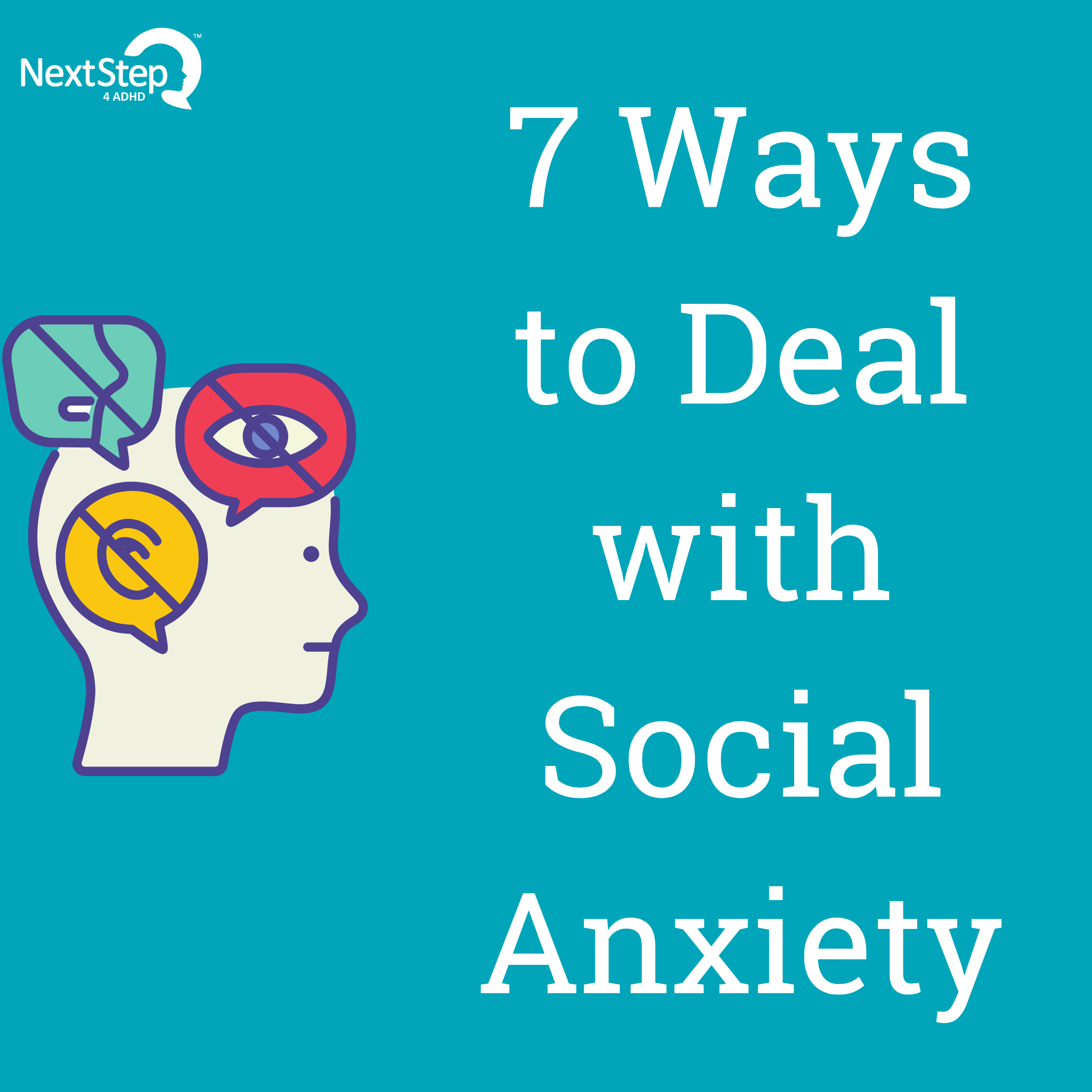
7 Ways to Manage Social Anxiety
Did you know that social anxiety is just one type of anxiety? There are five different anxiety disorders: generalized anxiety disorder (GAD), obsessive-compulsive disorder (OCD), post-traumatic stress disorder (PTSD), panic disorder, and social anxiety. Social anxiety, like other forms of anxiety, is characterized by intense worry. In the case of social anxiety, anxiety symptoms are heightened in everyday social situations.
At the Next Step, our team of experts is experienced in diagnosing and treating all types of anxiety. If you experience any of the symptoms of anxiety, we encourage you to visit us so can get the relief you need.
In the meantime, here are seven ways you can manage social anxiety.
1. Try Deep Breathing
Deep breathing exercises can help you reap the benefits of slow, steady breathing. Deep breathing exercises focus on deep breaths from your diaphragm. This is a useful skill as these exercises can also help relax your mind and body in uncomfortable social situations.
To explore two types of deep breathing, watch the video below. We’ll focus on triangle breaths and squares breaths.
WHY IT WORKS
Deep breathing triggers your parasympathetic nervous system and shifts your body away from flight or fight mode. Your parasympathetic nervous system is sometimes called the “rest and digest” system. So when this nervous system is stimulated, your body feels relaxed.
And when your body feels relaxed, your mind also feels relaxed, which can help you cope in social settings.
2. Spot Negative Thoughts (and Create Alternative Thoughts)
Dr. Dan Guy shares the first step to overcoming anxiety: “You’ve got to overcome the ANTS, or automatic negative thoughts.”
Automatic negative thoughts are automatic (and faulty) patterns of thinking can make social anxiety symptoms worse. There are many different types of negative thought patterns, including mind-reading, fortune-telling, and blame.
An ANT could sound like this:
- “Everyone here at this party knows how anxious I am.”
- “The whole restaurant is annoyed that I walked in here. They are all staring directly at me. ”
Negative thought patterns can be very bothersome, and unfortunately, they can become automatic. You can work to identify and overcome negative thought patterns, though. You can overcome negative thoughts by identifying them — and then coming up with alternative thoughts. For example, “Everyone is not ignoring me because I was late. They are simply engrossed in the speaker at the event.”
3. Learn to Face Your Fears
Avoiding social situations might temporarily reduce social anxiety, but in the long run, avoidance can severely impact your quality of life. Learning to face your fears can help you learn to cope so that you can enjoy social outings. If fear of public speaking is on your list, explore ways to face this fear in small, controlled settings. For example, you might volunteer to read the instructions out loud at a family game night. This is a smaller step and much more manageable than jumping into karaoke night with strangers.
There are many little things you can do on a daily basis to help you manage social anxiety. For example, arriving at dinner (or a meeting) early allows you time to mentally prepare. This also gives you the opportunity to greet friends (or co-workers) one at a time as they arrive.
4. Practice Self-Care
Self-care goes a long way in supporting your mental health. This includes:
- Eating a well-balanced diet
- Getting quality sleep each night
Researchers found that inadequate sleep can increase feelings of loneliness and make it harder to connect with others. Aim for 7-9 hours of sleep each night, especially before a big event. A solid diet can support your mood, energize you, and help you avoid blood sugar crashes.
5. Exercise
If you have social anxiety, exercise is helpful in a few ways. Exercise can:
- Relax you
- Boost your mood thanks to endorphins
- Provide an opportunity to practice social skills
- Supports your frontal cortex and strengthens your executive function skills (which then helps you deal with real or potential threats)
Bonus: Exercise in nature, if you can. Studies show that the combination of exercise and nature provides even more anxiety-reducing effects.
6. Learn about Social Anxiety
If you or a loved one struggle with anxiety, it’s important to learn as much as you can about the topic. You can
- Read books (here’s a list of anxiety books recommended by the American Anxiety and Depression Association)
- Take an online course (we have one that covers the link between anxiety and ADHD)
- Talk to your mental health care provider
Tip: Reading about anxiety can help you learn more about the condition, but even the act of reading can help you relax. Reading can relax your calm, reduce your heart rate, and ease the tension in your muscles. Researchers from the University of Sussex determined that reading can reduce stress levels by nearly 70%, according to a 2009 study. It works better and faster than other relaxation methods, like listening to calming music. Although, you can pair hot tea, calming music, and reading for a great relaxing activity.
7. Seek Help When You Need It
Even if you implement these strategies for reducing anxiety, you still might benefit from professional help. Remember, asking for help is never a sign of weakness. Here at Next Step 2 Mental Health, we provide comprehensive and compassionate anxiety treatment — no matter which type of anxiety you have. Whether you’ve been struggling with anxiety for years or current events have triggered your anxiety, we can help you feel better.
Give us a call at our Louisville, Kentucky office at 502-339-2442, or send us a message to request more information.
You can also click here to request an appointment with our convenient scheduling tool here.
References:
- https://www.hhs.gov/answers/mental-health-and-substance-abuse/what-are-the-five-major-types-of-anxiety-disorders/index.html
- https://www.sciencedaily.com/terms/parasympathetic_nervous_system.htm#:~:text=The%20parasympathetic%20nervous%20system%20is,muscles%20in%20the%20gastrointestinal%20tract.

Your Guide to Improving Communication in Marriage
If changes to “life as you know it” have caused tension in your relationship, you’re not alone. With more people staying at home and working at home, the increased time spent together can add pressure to your relationship. Anger, fear, and frustration are common feelings to experience during uncertain times such as these, and it can take a toll on your communication in marriage.
That being said, stress from current events or small squabbles don’t have to derail your relationship. Relationships, pandemic or not, require regular maintenance to function like a well-oiled machine. And one way to maintain a healthy relationship is by continually working to improve your communication.
Here are our best tips on strengthening the communication skills in your marriage.
Step-By-Step Guide on Communication in Your Marriage
1. Learn How to Fight Fairly
Conflict is a scary word, but the reality is that disagreements are part of living with another person. Conflicts, though, don’t necessarily mean that your relationship is in trouble. The key is to learn to resolve disagreements fairly and with respect.
Sometimes disagreements are minor, but most relationship conflicts are recurring issues. In fact, up to 69% of relationship conflicts are caused by recurring issues. This means that the majority of conflicts arise because past issues aren’t properly resolved. Avoiding fights isn’t necessarily better. Avoidance doesn’t allow for the problems to be solved — and that can account for those recurring conflicts. Having good communication in your marriage won’t eliminate sources of conflict, but strong communication skills can help you better resolve differences.
The key is to fight fairly. You can learn five strategies to fight fairly in this post by Dr. Dan Guy.
One of the guiding principles behind fair fighting is to remember who you are fighting with. As Dr. Guy reminds us, “Remember that you are arguing with somebody you love.”
Tip: If you know you need to have an important conversation, plan ahead. Don’t spring a potentially hot topic issue on your spouse — which leads to tip #2.
2. Schedule Important Conversations
Throughout your marriage, you will have dozens (if not hundreds) of important conversations with your spouse. Unfortunately, poorly timed conversations don’t lay the best foundation for open communication.
Imagine this scenario:
You need to talk to your spouse about something important. Your spouse walks in the door after a long, hard day at work. He or she may not have enough energy to handle a big conversation. He or she may even feel attacked.
Instead:
Let your spouse know you need to talk about X,Y,Z. Ask him or her, “When is a good time for us to talk about (insert your topic of conversation here) with me?”
Why this works:
Scheduling an important conversation ensures that your partner is in the right frame of mind to think logically about the topic at hand. Asking to schedule an important conversation also ensures that you two have the time and space and attention you each deserve. It’s hard to have a big conversation when you’re walking in the door from work and trying to set down your briefcase, get dinner on the table, etc.
3. Learn Your Spouse’s Love Language
One of the most important things you can do for your relationship is to learn your spouse’s love language. The love languages are inspired The Five Love Languages by Gary Chapman. The primary love languages are:
- Words of affirmation
- Acts of Service
- Quality time
- Gifts
- Physical touch
You can improve your communication skills by “speaking” your spouse’s love language.
Ask your partner about the things that make them feel loved — or unloved. As you listen to your spouse, listen with an open mind and open heart. This open communication is a great exercise in keeping the communication line open. You may learn new things about your spouse, and it may even change the way you two communicate!
Bonus: Tune in to this podcast episode as Oprah Winfrey interviews Dr. Gary Chapman.
Types of Communication in Marriage

In marriage, there are many ways to practice your communication skills. Communication is a big umbrella that encompasses everything from quick text messages to schedule a dinner to big sit-down conversations to decide which house you want to buy.
1. Informal Conversations
Informal conversations — or small talk — are one of the most frequent ways you can communicate with your spouse. Informal conversations are:
- Simple connections
- Don’t require emotional vulnerability
Examples:
- “Hi, honey! How was your day?”
- “I’m starving. Where should we go for dinner?”
- “Did you the sports recap on the radio?”
- “Did you help Emily with her science project, or should I?”
2. “Making Decisions” Administrative Meetings
After small talk, you’ll have plenty of “administrative” conversations in your marriage. These types of conversations include:
- Setting budgets
- Deciding on which new car to buy
- Arranging carpool schedules
Communicating about major decisions is an important part of your marriage. While you don’t need to discuss every decision (like what to order at a restaurant), there are some topics that always require a discussion. With your spouse, determine which types of decisions always require an administrative meeting first. Examples include:
- Making vacation plans
- Spending over a certain dollar amount
Each couple may have their own guidance. For example, one couple may say that spending over $100 requires a quick check-in while other couples may set a different number. Regardless, it’s important to stick to the rules you and your spouse set. Most importantly, always be considerate of your spouse.
3. Solution-Finding Conversations
You may also need to communicate with your spouse to resolve a conflict or find a solution to a problem. Maybe your car broke down and you need to figure out a way to get the car to the shop and share the remaining car. It’s important to approach these solutions-focused conversations remembering that your spouse is your teammate. Together, you can work to find a solution for the current issue.
These types of conversations can slip-slide into an argument, especially if you disagree on what the right solution is. Keep in mind that resolution of the problem is the goal — not whether or not your idea is the winning solution.
4. Life-Giving Conversations
Have you ever stayed up late into the night talking with your spouse? Sometimes a conversation has the power to recharge your soul and rekindle your relationship. These are life-giving conversations.
Let’s back up a minute: the small talk and the administrative meetings and the solution-finding conversations are reactive conversations — triggered by some need or event.
Life-giving conversations aren’t necessarily spurred on by an event. These are proactive conversations that allow you to grow closer to your spouse, to understand him or her better, and to explore each other’s hopes and dreams.
The first three types of conversations monopolize most of your time, but the life-giving conversations are incredibly important. If you’re struggling to make time for life-giving conversations, try to follow the 10-minute rule. According to research led by Dr. Terri Orbuch, the happiest couples spent at least 10 minutes each day talking about meaningful things — not the day to day administrative topics.
TRY IT: Ask your spouse to spend at least 10 minutes talking about life-giving topics. This can include your hopes, dreams, anything that helps you understand your partner better. During this time , don’t talk about your kids, the chores, the house, or work. Focus on your spouse.
Find the joy in rediscovering your spouse. Your spouse grows and evolves as a person and that gives you the chance to keep rediscovering your partner. That’s the beauty of marriage!
Communication in Marriage: Challenges
There are many factors that can impact your quality of communication with your spouse. The following can prevent open and honest communication:
- Busy schedules (not making time for important conversations)
- Not feeling loved or valued
- Not actively listening (and possibly misinterpreting your spouse’s points)
- Trust issues from past transgressions
- Avoiding tough conversations (to avoid a potential falling out)
- Difficulty expressing tough emotions
The good news is that communication skills can be developed and strengthened.
4 Tips to Improve Communication with Your Spouse
Always Ask Them How They Are Doing and How You Can Help
If your spouse is going through a stressful time, ask what you can do to help. This lets your spouse know that you see what they are going through. This is a good opportunity for your spouse to open to you, share frustrations, and possibly work as a team to reduce your spouse’s stress load.
Give Space When It’s Needed
Everyone reacts to stress differently. Some people like to talk out loud, hashing out ideas to find solutions. Other people prefer a little quiet space to think and reflect alone. If your spouse asks for quiet time, remember that it isn’t always you! Asking for space doesn’t mean your spouse doesn’t want to talk. Quiet reflection may be just what your spouse needs to think — and then come back to you for a discussion.
Focus on You
Relationships take work and care, but don’t forget to take care of yourself too. You may find that as you work to improve yourself (#personaldevelopment), you become a better communicator and a better partner to your spouse!
Make Time for Date Night
While your favorite date night spots might be off the agenda for a while due to COVID, you can still find ways to keep your date night consistent. By setting that intentional time to reconnect, it keeps the communication lines between the two of you open.
Try:
- A date night at home (date subscription boxes, cooking a new meal together, planning an old fashioned game night)
- Walking around town, hand in hand, sipping on coffee
- Going for a hike together
Remember…
Marriage is a marathon — not a sprint. It takes effort, hard work, and a little grace to make a marriage work. Keeping the focus on your communication in your marriage prepares you for any obstacles that lay ahead.
Need a Little Help
At NextStep 2 Mental Health, we provide comprehensive and compassionate mental health care — and that includes couples therapy and marital counseling. Whether you’ve been struggling with multiple issues or you just can’t seem to resolve a conflict, we can help you get your relationship back on track. Give us a call at our Louisville, Kentucky office at 502-339-2442, or send us a message to request more information.
You can also request an appointment here. Learn More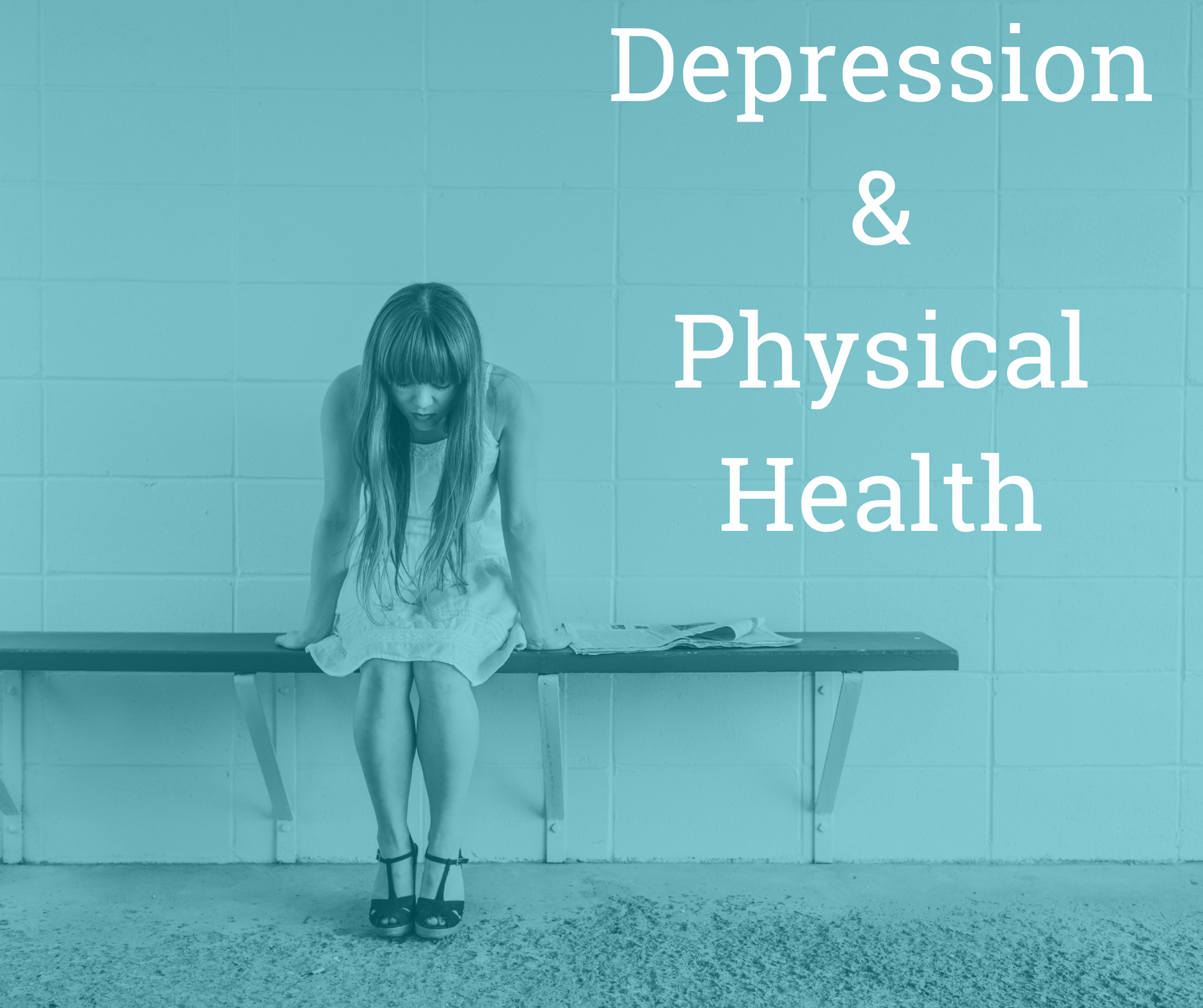
How Untreated Depression Can Negatively Impact Your Health
Over 322 million people live with depression, according to the American Depression and Anxiety Association [1] . While depression is a common mental illness, it’s not something to brush off. Depression is serious, and those living with it often need treatment to feel better. There are many different types of depression – including major depression, persistent depressive disorder, and postpartum depression just to name a few. Depending on the type of depression you have, you’ll notice that the symptoms suffered may be as individual as you are. Depression may affect your mental health in many ways, from intense feelings of sadness to a loss of interest in the things that you used to love.
In addition to taking a toll on your mental health, untreated depression can also impact your physical health.
At Next Step 2 Mental Health, our team of compassionate providers wants you to know how depression can impact your physical health. In this article, we’ll explore how depression can affect physical health in adults — and what you can do about it.
Depression Causes Sleep Disruptions
If you’re noticing changes to your sleeping patterns, take note. Changes in sleep habits and patterns is a common sign of untreated depression. You might struggle with:
- Insomnia, either difficulty falling asleep and/or staying asleep
- Sleeping too much
Regardless of which end of the spectrum you fall into, you may never feel quite rested. When you don’t get the quality and quantity of sleep you need, your body is affected. Poor sleep contributes to:
- Fatigue
- Lack of energy
- Daytime sleepiness
- Irritability
- Brain fog
- Poor memory
- Weakened immune system
A chronic lack of quality sleep can also increase your risk of diabetes and heart disease. [2]
Depression and Eating Disorders
There is a strong link between depression and eating disorders. Here are a few facts:
- Depression can lead to either overeating or loss of appetite. Weight gain and weight loss are both symptoms of depression.
- 24% of individuals with bipolar disorder also had an eating disorder [3]
- Almost 50% of those who struggled with binge eating had depression [3]
- Anxiety and depression can trigger anorexia [3]
If you or a loved one are struggling with an eating disorder, you can find the National Eating Disorder Association Crisis Hotline information here.
Depression and Heart Disease
We already covered that depression can contribute to sleep disturbances, and a chronic loss of sleep can increase the risk of developing heart disease. The experts at Cleveland Clinic estimate that 15% of people with heart disease have depression. [4]
Researchers continue to link untreated depression and heart disease. A 2015 study published in the journal Circulation highlighted that teenagers with untreated major depression were more likely to develop early-onset cardiovascular disease. [5]
Depression Causes Pain and Fatigue

Monica Clark, LPA highlights an important point: “Depression is not just in your head.” She continues to share that depression can cause real, tangible pain. This includes headaches, stomach pain, and muscle tension. Depression can alter the way you experience pain, decreasing your pain tolerance. Not only do you feel pain more acutely, but you also might take longer to recover from exerting activities.
Depression Affects Your Immune System
Did you know that depression can suppress your immune system? You’re more susceptible to illness – such as the flu or a cold — when your immune system is weak.
How does depression suppress your immune system? Depression affects your immune system:
- Lack of sleep can weaken your immune system
- Poor nutrition can also weaken your immune system [6]
Remember: ~70% of your immune system in created in your gut. [7]
Depression and Libido
Unmanaged chronic depression can cause a low (or nonexistent) libido. A low sex drive can be one of the first warning signs of depression. [8] Loss of libido can affect both men and women, but it may be particularly profound for women suffering from postpartum depression. [9]
Early Detection and Swift Treatment
While we just covered a lot of serious ways that untreated depression can impact your physical health, it’s important not to brush off these symptoms. Even if you can “push through”, depression treatment can help you feel better.
Depression treatment, which can include medication and therapy, can address the mental symptoms. As your depression is managed, you should see that the physical symptoms improve too.
We’re Here For You
Our team at Next Step 2 Mental Health can help you break the cycle of depression using all a multidisciplinary approach that may include medication, therapy, lifestyle changes — or a combination of these.
We’re just a call or click away. Our Louisville, Kentucky office can be reached at 502-339-2442. You can also request an appointment online.
References:
- https://adaa.org/understanding-anxiety/depression
- https://www.healthline.com/health/sleep-deprivation/effects-on-body#:~:text=If%20you%20don%27t%20get,diabetes%20mellitus%20and%20heart%20disease.
- https://www.webmd.com/mental-health/eating-disorders/features/eating-disorders#1
- https://my.clevelandclinic.org/health/diseases/16917-depression–heart-disease
- https://www.ahajournals.org/doi/full/10.1161/CIR.0000000000000229
- https://www.ncbi.nlm.nih.gov/pmc/articles/PMC2738337/
- https://www.ncbi.nlm.nih.gov/pmc/articles/PMC3337124/
- https://www.hopkinsmedicine.org/health/wellness-and-prevention/low-sex-drive-could-it-be-a-sign-of-depression
- https://www.ncbi.nlm.nih.gov/pmc/articles/PMC5462380/
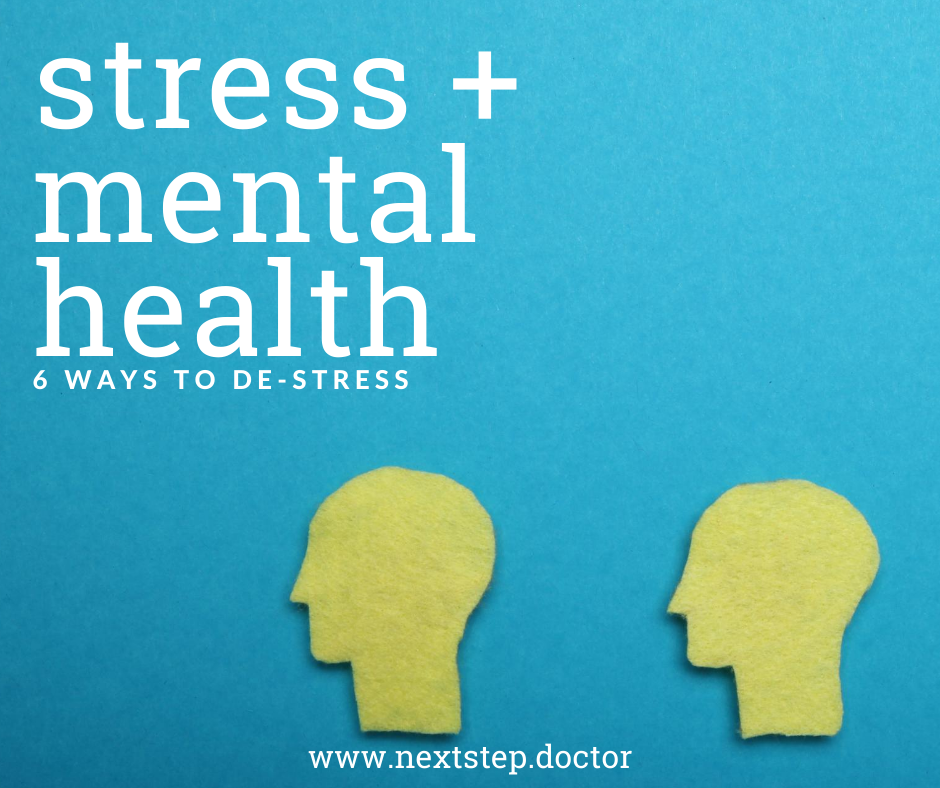
Stress and Mental Health: How Is Your Brain Affected?
Stress is frequently linked to physical issues (like headaches, muscle tension, or heart troubles), but chronic, unmanaged stress impacts your mental well-being too. Here’s what you need to know about the connection between stress and mental health, plus 6 ways to tame stress.
First, What Is Stress?
Stress seems like such an abstract concept. What stresses out one person might not stress out another person. So what — exactly — is stress?
According to the medical encyclopedia of the US National Library of Medicine, stress is your body’s reaction to a potentially dangerous situation or event. In other words, stress is how your body reacts to a demand of some kind. Stress isn’t necessarily good or bad. Occasional, spurts of stress can be a good thing. For example, a deadline at work can motivate you to finish a project.
Stress is common, and the reality is that everyone experiences some degree of stress on a daily basis. Stress shifts from neutral to bad when the occasional, situational stress turns into chronic stress. Here at Next Step 2 Mental Health, we understand how chronic stress can impact your mental health, often leading to increased feelings of anxiety and/or depression. If you’re feeling overwhelmed right now, we recommend that you schedule an appointment with us so you can get the care you need.
In the meantime, this is what you need to know about stress and mental health — and how we can help you feel less stressed.
How Stress Affects Your Mental Health
From weight gain to weakened immune systems to GI upset, it’s no surprise that stress takes on a toll on your physical health.
Stress also affects another part of your body: your brain. According to the experts at Harvard Health, prolonged stress can rewire your brain in a way that focuses on survival. How does that work? Chronic stress can cause your amygdala (a part of your brain that processes fear) to be more active than your prefrontal cortex (responsible for higher-order tasks). As a result, chronic stress affects your memory and other brain functions.
Chronic stress can contribute to:
- Constantly worrying
- Increased irritability
- Increased feelings of depression
- Increased feelings of anxiety
- Mood swings
- Feelings of worthlessness or inadequacy
- Racing thoughts and the inability to quiet your mind
- Difficulty focusing at work and at home
- Feeling intensely overwhelmed
In other words, unmanaged high levels of stress can trigger (or intensify) anxiety, depression, and other mental health disorders.
6 Ways to Reduce Stress
If you’re feeling overwhelmed and stressed, it’s important to reduce your stress load as much as possible. This might look like saying no to extra outings or projects — at least until you’re less overwhelmed.
There are also things you can do every day (like exercise) that help your body handle stress. Here are the top six ways to manage your stress levels:
1. Aim for 150 minutes of exercise per week.
The American Heart Association suggests that adults log at least 150 minutes of moderate exercise each week. Not only does exercise support your cardiovascular health, it also helps to reduce cortisol (AKA the stress hormone). Exercise combats stress (and feelings of overwhelm) by increasing feel-good neurotransmitters e.g., dopamine and endorphins. Neurotransmitters (AKA brain chemicals) boost your mood, which helps to alleviate the mood swings and irritability associated with stress.
Exercise can help in another way too. Taking time out of your day to exercise allows you some quiet time to think and reflect. Maybe you think about your problems at work on your long jog in the neighborhood — you might even brainstorm a few solutions while you run!
You can walk around the block, try a stair-stepper in your home, ride your bike in the park, or even try an online dance workout. Anything that gets you moving is good for your body and your brain.
2. Make time for your hobbies.
If your schedule is packed, you might struggle to find any spare time anywhere, but it’s important to make time for activities that you enjoy. Participating in your favorite hobby can boost your confidence, help you feel in control, relax you, and lift your mood. It also helps you feel a sense of accomplishment.
Set aside at least 30 minutes each day for a relaxing activity. Choose relaxing activities like coloring, crocheting, baking, reading a book, or practicing yoga.
3. Set S.M.A.R.T. goals.
Raise your hand if you’ve ever felt stressed out just looking at your to-do list? Crammed schedules and never-ending to-do lists can be a big source of stress. Instead of just adding another item to your list, create S.M.A.R.T. goals. S.M.A.R.T goals (specific, measurable, attainable, relevant, time-based) take many factors into account to help you better reach your goals. For example, adding “time-based” to a goal helps you determine when you actually need to complete each task.
Here’s an example:
- “Need to exercise more”
As it is, this goal is vague and can add to your tension. Did you exercise enough? What is “more”? Can I cross this off my list yet?
Now, let’s turn it into a S.M.A.R.T goal.
- “I want to walk around the block (specific) two times (measurable and attainable) at 7PM every evening (time-based) to improve my overall health (relevant).”
Now, with this goal, “exercise more” doesn’t seem like a looming task on your to-do list. Because you made a S.M.A.R.T. goal, it tells you exactly how this item fits into your schedule — no stress of wondering when and how to “exercise more.”
4. Get plenty of good quality sleep.
Good sleep — both quality and quantity of sleep — is essential for your mental health. According to the National Sleep Foundation, you need between seven and nine hours of sleep each night. When you don’t get enough sleep, your mental well-being suffers. You might notice:
- Daytime sleepiness
- Memory troubles and brain fog
- Mood swings and irritability
- Decision fatigue
If you need help sleeping better, try eliminating blue screens for at least two hours before bedtime.
5. Focus on nutrition.
Your body needs food for fuel, but so does your mind! It’s tempting to reach for snacks or rich comfort food when you’re stressed (hello, brownie sundae!), but snacks and processed foods (as tasty as they are) aren’t good for your brain. As it turns out, your gut and your brain are very connected.
Experts at Harvard Health studied the typical Mediterranean, Japanese, and American diet. Researchers noted that following a veggie-rich Mediterranean or Japanese diet could reduce your risk of depression by as much as 25%. How can a veggie-rich diet reduce the risk of depression? A whopping 90% of your serotonin is produced in your digestive system and blood platelets.
The next time you’re feeling oh-so-stressed, take a pass on the candy and chips and reach for a hummus-veggie platter. Certified Health Coach Pam Valdes suggests these brain-healthy snacks too:
- A sliced apple & a tablespoon of peanut or almond butter.
- 1/2 cup low-fat cottage cheese topped with fruit, such as a fresh peach or fresh blueberries, with a sprinkling of cinnamon sugar if you like.
- A fresh tomato, chopped & lightly salted. Add 1 oz. fresh mozzarella (the kind that is typically sold by the deli cheeses – looks like a packaged white ball of cheese), cubed. Toss with the tomato; add a drizzle of balsamic vinegar and fresh basil leaves, if you like.
- 1 or 2 clementines paired with a small handful of unsalted almonds.
- Sliced berries topped with milk or almond milk.
- Grapes with a small handful of pecans. Try heating the pecans before serving with frosty cold grapes – delicious!
- Any flavor of hummus, served hot or cold, with veggies, such as carrots, bell peppers, cucumbers, broccoli, or celery.
- A pear served with 1 oz. cheddar cheese.
6. Ask for help when you need it.
If you’re working hard to reduce your stress levels, but still feel overwhelmed, remember: there is strength in asking for help. Whether you ask a co-worker for input on a big project or ask a family member to help you, getting help from a friend or loved one can help you through a stressful time.
Still Struggling to Manage High Stress Levels?
High stress at your job isn’t the only source of stress. Stress can come from many places, including relationship struggles or even current events. Untreated mental health conditions (such as anxiety or OCD) can also add to your already-high stress levels. For example, unmanaged anxiety can compound your worries about deadlines at work.
If you’re feeling stressed out, we can help. Our team of experts provide compassionate and understanding care to support your mental well-being. Through a combination of therapy, medication, and coaching, we can help live a happier, better life. We’re just a call or click away. Call at our Louisville, Kentucky office at 502-339-2442, or send us a message to request more information.
You can also request an appointment with our convenient scheduling tool here.
Learn More
